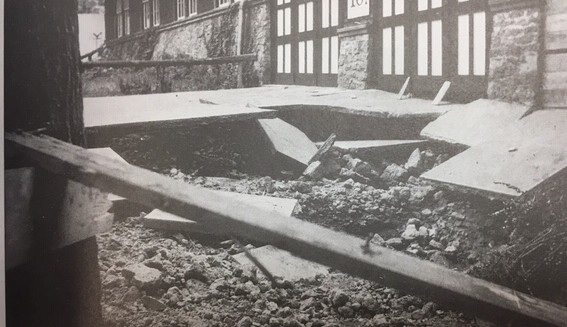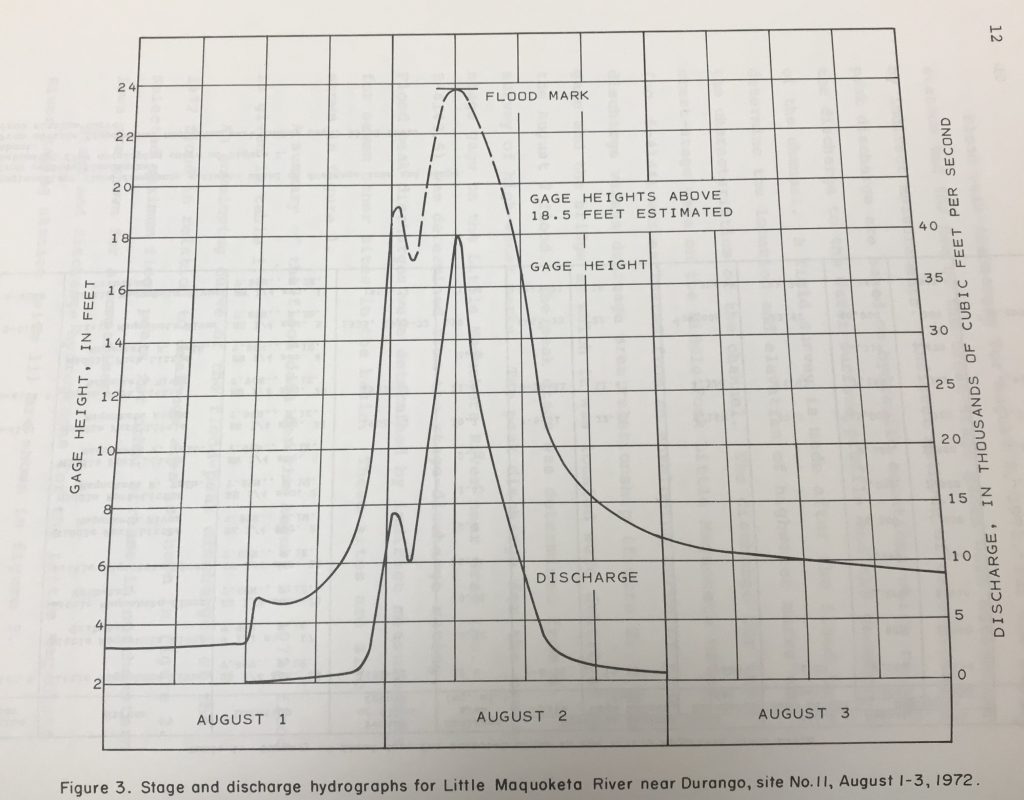Rain Records and Floods: the Twentieth Century and the Twenty-First
Dubuque county, Iowa

In addition to the flood of 1876, the city of Dubuque and the surrounding communities among the bluffs experienced flooding in 1918, 1919, 1925, 1937, and 1972, says a report by the U.S. Geological Survey from 1973. The Little Maquoketa River lying just to the city’s northwest is a tributary to the Mississippi River. Three streams of the river—the North Fork, the Middle Fork, and the main stem of the Little Maquoketa move through the surrounding valleys and steep hills making the prospect of flooding reason for caution and preparation by local residents.
Lives were lost to flooding not only in 1876 but again in 1919. Another July flood, that year seven died when 3.81 inches fell in four hours. There was considerable damage to streets and other structures throughout the portion of the city of Dubuque lying below the bluffs.
In 1934 a gaging station was established in the area. This and data from the 1925 flood enabled more precise monitoring and careful data collection. Timely warnings and fruitful planning became more possible with this information. June in 1925 was an important month to track carefully. That month 10.8 inches of rain fell, principally from four storms. On the night of June 14 alone, 3.15 inches fell in 6 hours. The Little Maquoketa River near Durango was four feet higher than the previous record height in July 1919.
On August 1st and 2nd, 1972, the 1925 record was broken when a cloudburst brought over six inches of rain to all three forks of the Little Maquoketa River. East of Durango the bridge deck was 6 feet under water and “the water virtually extended from valley wall to valley wall. “ Crops, streets, roads, bridges, homes all saw damage in and around Daytonville, Sageville, and Durango , all on Highway 52. Though the damage estimate exceeded 1 million in 1972 dollars, no human lives were lost and no one was seriously injured.

Instances of heavy rain have become more frequent and more intense in the twenty-first century. To take just one record-breaking year, 2011, the most rainfall to date for July 27 fell on that year: 7.47 inches. The previous record for that date was approximately half that amount. The most rainfall in a twenty-four-hour period, 10.62 inches, fell from the evening of the 27th to the morning of the 28th. July that year saw more rain in Dubuque than any previous July, or in fact any previous month, on record: 16.01 inches.
Record-setting rain and flood events continue to occur. TV channel 9 in Dubuque reported on June 13, 2019, “it’s been a record-setting 85 days since the Mississippi River has been below flood stage in Dubuque.”
Sources: on-line: “Heavy Rains and Flooding – Dubuque Area 07/27-07/28,” National Weather Service; Allison Wong, “City of Dubuque officials, boaters happy to see Mississippi River dip below flood stage,” 9abc, June 13, 2019.
